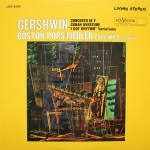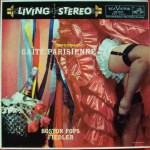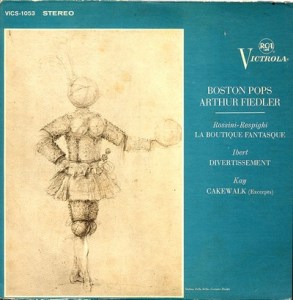 Hot Stamper Pressings of Living Stereo Titles Available Now
Hot Stamper Pressings of Living Stereo Titles Available Now
Hot Stamper Pressings of Orchestral Spectaculars Available Now
Explosive dynamics, HUGE space and size, with unerringly correct tonality, this is a Demo Disc like no other.
When “in-the-know” audiophiles discuss three-dimensionality, soundstaging and depth, they should be talking about a record that sounds like this.
But are they? The so-called “glorious, life-changing” sound of one heavy vinyl reissue after another seems to be the only kind of record audiophiles and the reviewers who write for them want to talk about these days.
 Even twenty years ago reviewers noted that tracks on compilations such as this often had better sound than the albums from which they were taken, proof that they were listening critically and comparing pressings.
Even twenty years ago reviewers noted that tracks on compilations such as this often had better sound than the albums from which they were taken, proof that they were listening critically and comparing pressings.
What happened to reviewers of that caliber?
I can tell you what happened to them: they left audio, driven out according to the principle that underlies Gresham’s Law:
Bad reviewers drive out good ones.
Which leaves you with the type that can’t tell how mediocre-at-best most modern Heavy Vinyl reissues are. A sad state of affairs if you ask me, but one that no longer impacts our business as we simply don’t bother to buy, sell or play most of these records.
A Must Own Living Stereo from 1959
A record as good as Destination Stereo belongs in every serious audiophile’s collection. Allow me to make the case.
The full range of colors of the orchestra are here presented with remarkable clarity, dynamic contrast, spaciousness, sweetness, and timbral accuracy.
If you want to demonstrate to a novice listener why modern recordings are so often lacking in many of the qualities prized by audiophiles, all you have to do is put this record on for them.
Just play Gnomus to hear The Power of the Orchestra, Living Stereo style.
The fourth and fifth movements of Capriccio Espagnol, the second track on side one, sound superb, CLEARLY better here than on the Shaded Dog pressings we played about a year ago (which were terrible and never made it to the site. Great performance but bad mastering of what obviously was a very good master tape). [We’re not so sure that is true, the record may in fact be a lot better than we give it credit for.]
You can also hear the Living Stereo sound especially well on the excerpt from “The Fourth of July” performed by Morton Gould. It’s one of the best sounding tracks here.
I don’t think the RCA engineers could have cut this record much better — it has all the Living Stereo magic one could ask for, as well as the bass and dynamics that are missing from so many other vintage Golden Age records.
Further Reading
 Reviews and Commentaries for the Music of Edvard Grieg
Reviews and Commentaries for the Music of Edvard Grieg




 Reviews and Commentaries for the Music of Edvard Grieg
Reviews and Commentaries for the Music of Edvard Grieg
